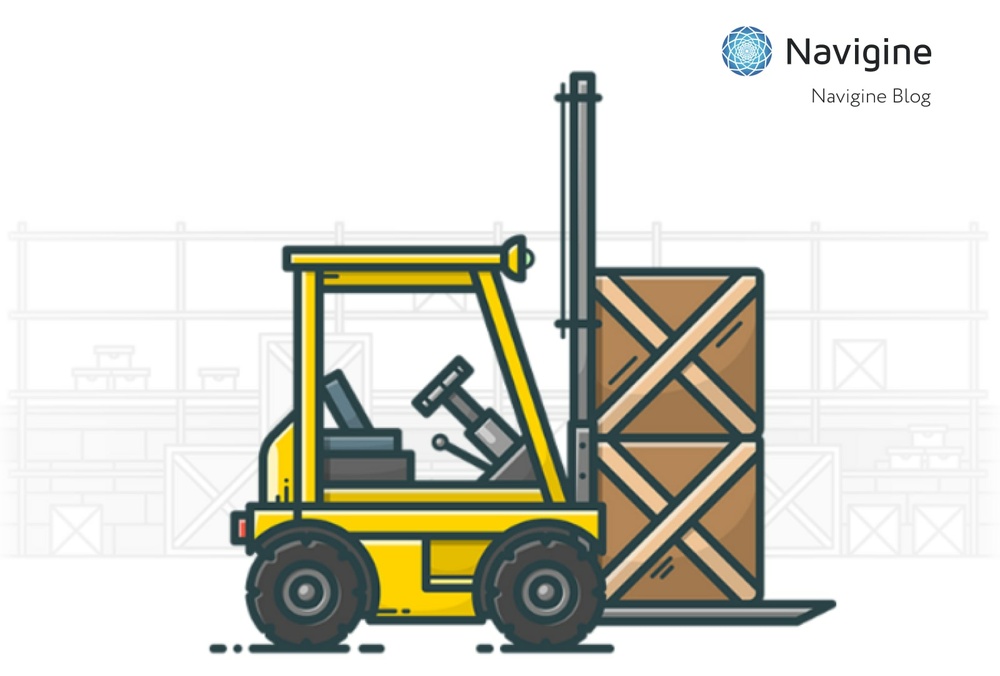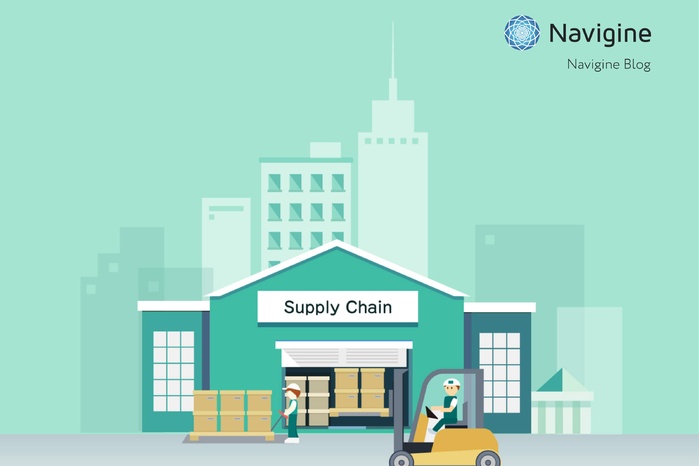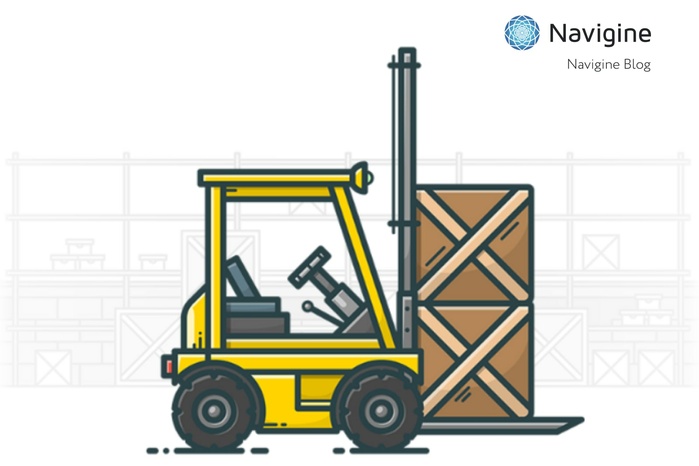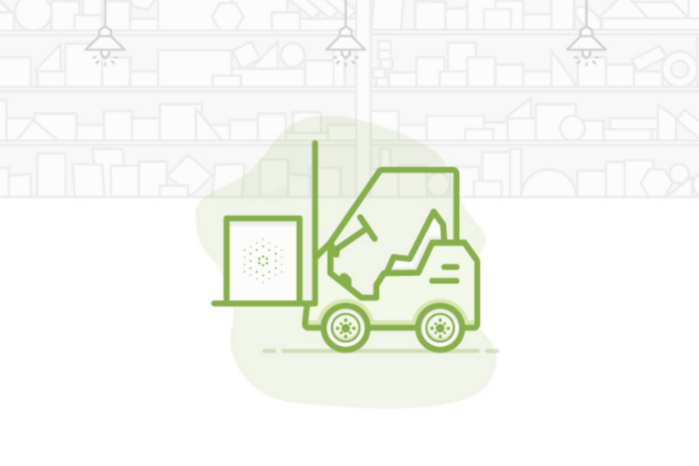Img Source - Alex Kunchevsky
In a rapidly changing business landscape, warehousing and logistics leaders are under immense pressure to optimize their operations. RTLS in warehouses is a system that can help. In this article, we will study the main advantages of this technology, as well as learn how it improves the performance of companies.
What is RTLS?
RTLS (Real-Time Location System) is an autonomous network of IoT-based devices that help locate objects and track their movement indoors. In other words, transport, pallets, and products are equipped with special tags/beacons, which constantly send out signals with specific identifiers. Readers or antennas installed in different places within the building pick up these pulses and then transmit them to the servers.
The transmitted information may include the following data:
- identifiers;
- the current location of the object;
- the exact time of the signal;
- the state of the object;
- information about the state of the external environment (for example, humidity level, temperature, etc.).
Statistically, the global RTLS market in 2022 was estimated at $3.9 billion. According to forecasts, by 2026, the average annual growth rate will reach 26.5%, and the total cost will be estimated at $12.7 billion.
The growing popularity of the system is explained by the high positioning accuracy and wide possibilities for warehouses, which include:
- real-time monitoring of valuable assets;
- tracking the work of employees, including the time of arrival, coming in late, and access to restricted areas;
- conveniently navigating special equipment and vehicles indoors;
- improving the security of assets, equipment, and staff.
The Real-Time Location System for warehouses is easily integrated into the infrastructure of companies and provides the management with detailed analytics to improve efficiency in warehouse management.
RTLS capabilities in warehouses
There are many benefits that RTLS systems can provide. We will look at the main problems that present themselves in warehouses and see how RTLS helps solve them.
Improving warehouse efficiency
With RTLS, you can dramatically increase the efficiency of the warehouse. The system resolves the following issues:
- Difficulty finding assets. Many warehouses face asset loss. Forklifts get lost somewhere between pallets, and products get misplaced. Because of this, the speed of processing orders is seriously affected, which causes a delay in deliveries. With RTLS, you can track objects in real time. When using a Real-Time Location System for warehouses, you can see detailed digital maps, where you can easily find forklifts and pallets, as well as monitor their movement and current condition.
- Non-optimal routes. In many warehouses, especially large ones, the staff has to walk in circles to pick up an order. This takes time and effort and even entails high fuel costs when using vehicles. RTLS provides more convenient navigation within the warehouse. The technology allows you to develop optimal routes and speed up warehouse operations.
- Inefficient order picking process. The manual order picking process is time-consuming and often accompanied by human errors. Sometimes it takes a considerable amount of time to find a particular product and identify it, which negatively affects the speed of assembly and reduces customer satisfaction. When you use RTLS instead, tablets or special picking equipment provide clear instructions on how to move around the warehouse and help quickly find the required products.
- Underutilized equipment. Downtime of equipment leads to a decrease in labor productivity and unnecessary maintenance costs. An RTLS system provides a detailed analysis of the equipment operation. The RTLS-based platform can track information such as usage time, distance traveled, number of trips to unload or load products, etc. Having this data helps the management optimize operations and reduce downtime.
- Overloaded transport routes. Traffic jams usually come from inefficient planning. If you send several loaders at once along the same route, this can lead to delays and even accidents. The system redirects forklifts and builds the most suitable routes, eliminating inefficient or congested routes for vehicles.

An example of an asset tracking platform for warehouse
Ensuring staff safety
An important part of warehouse efficiency is ensuring the safety of people and equipment. RTLS in warehouses helps secure warehouses and prevent the following problems:
- Accidents due to non-optimal routes. Moving equipment makes the warehouse a dangerous working environment, which sometimes means collisions with other assets or even people. This can be avoided with RTLS. Special sensors constantly monitor the movement of vehicles and send warning signals in case of a collision.
- Poorly organized evacuation. In an emergency (such as fires, floods, etc.), people in large warehouses often can’t find out about the incident in time and don’t have enough time to evacuate before the issue begins to pose a danger. Things change after implementing RTLS. Thanks to the system, you can use the panic button, which will update rescuers on the location of a staff member in trouble. You can also press the panic button in other situations - for example, in case of injuries or fainting. In addition, the technology can send special notifications to smartphones, which inform about the nearest exits from the building and the shortest evacuation routes.
- Staff management issues. By implementing RTLS, you can more effectively manage your workforce. The technology improves warehouse routing capabilities, increases productivity, and ensures cost savings.
- Inaccurate inventory. All warehouse monitoring data is contained in a single system, which significantly increases the accuracy of the inventory. The platform gives a complete view of the location, status, and use of an object, which simplifies reporting and provides better analytics.
Reducing asset theft
Many warehouses face high-value asset theft. Using indoor positioning devices helps reduce the number of thefts. The system monitors each tracked asset around the clock, and in case it’s found outside the warehouse, it sends a push notification, sound, or light signal.
The most efficient way to reduce theft is to set up geofences and automatic alerts. The entire territory of the warehouse will be divided into sections with a ban on equipment crossing certain zones. If equipment or products leave the area, managers or security will immediately be notified. Oftentimes, the system allows not only for preventing theft but also for detecting an intruder even before they leave the territory.
Technologies for implementing an RTLS system in the warehouse
RTLS in a warehouse can be set up with various technologies. The most common ones are Bluetooth® Low Energy, UWB, RFID, and Wi-Fi.
Bluetooth® LE
Bluetooth® Low Energy is the optimal solution for local positioning and tracking. When using this technology, you can create apps that help you build indoor maps and easily find the right objects. Miniature sensors-beacons and tags with low power consumption are used to determine the location. They have a long range (within 330 ft) and can detect assets with an accuracy of 3 ft.
As tags for equipment or staff, we recommend using Bluetooth® LE tags, which are available in various shapes and sizes. Their advantages include the following:
- versatility - suitable for tracking both vehicles and staff, equipment, and products;
- high positioning accuracy;
- IP62 humidity resistance;
- long battery life;
- a multifunctional call button (for example, for introducing panic buttons).
UWB
Ultra-wideband (UWB) technology allows you to locate objects with the highest accuracy of up to 12 inches. It’s based on special tags that emit short pulses at high bandwidth. Signals can propagate at frequencies up to several GHz and don’t require meeting line-of-sight conditions.
To implement an RTLS system based on UWB, it’s recommended to use Ultra Wideband tags, which have the following features:
- low power consumption;
- easy installation and configuration;
- small size;
- versatile design (in the form of tags, badges, cards, etc.);
- instant location tracking in real time.
RFID
RFID technology is based on readers that provide radio emission at certain frequencies and can determine the location within a radius of about 330 ft. As soon as assets are detected in the coverage zone, the RFID tags located on them begin to transfer data that allows you to accurately position objects.
The advantages of RFID technology are the following:
- automating many warehouse processes;
- not needing the line of sight of objects;
- unique encryption algorithms that increase system security;
- reading thousands of identification codes per second at once.
Wireless Mesh
Wireless Mesh technology is revolutionizing asset tracking in warehouse management systems by offering distinct advantages such as low installation and maintenance costs, scalability, and high data transmission reliability. Wireless Mesh uses battery-operated location tracking tags and environment sensors to collect real-time data.
One of the key benefits of Wireless Mesh technology is its low installation and maintenance cost. The devices can be fully battery-operated and easily deployed. Scalability is another advantage of Wireless Mesh. Expanding the coverage area is as simple as adding more 'plug-and-play' devices using tape, straps, or screws.
In warehouse management, Wireless Mesh technology can greatly benefit asset tracking. By attaching tags to equipment and beacons to walls, warehouses can establish a robust real-time location and status tracking infrastructure. This helps reduce time wasted searching for misplaced equipment and lowers the loss of critical assets.
Wi-Fi
This technology performs positioning through existing Wi-Fi points. Using the multilateration method, each tag on equipment or goods transmits its identifier (SSID), which allows you to determine the location with an accuracy of about 16 ft. The range of Wi-Fi points varies from 100 to 660 ft.
Wi-Fi is widely used when implementing RTLS in warehouses. The reason for its popularity lies in the following advantages:
- building the system based on existing infrastructure;
- long range of impulses;
- scalability, taking into account the growing needs of the warehouse;
- seamlessly combining with other technologies to obtain more accurate data.
If you’re looking to set up reliable real-time location systems in your warehouse, Navigine can provide the tools you need to optimize your business processes. We offer comprehensive services, including software development and implementation, as well as qualified technical support when setting up and using the RTLS. To get more detailed advice and recommendations, contact our staff using the feedback form or book a free Zoom demo.




